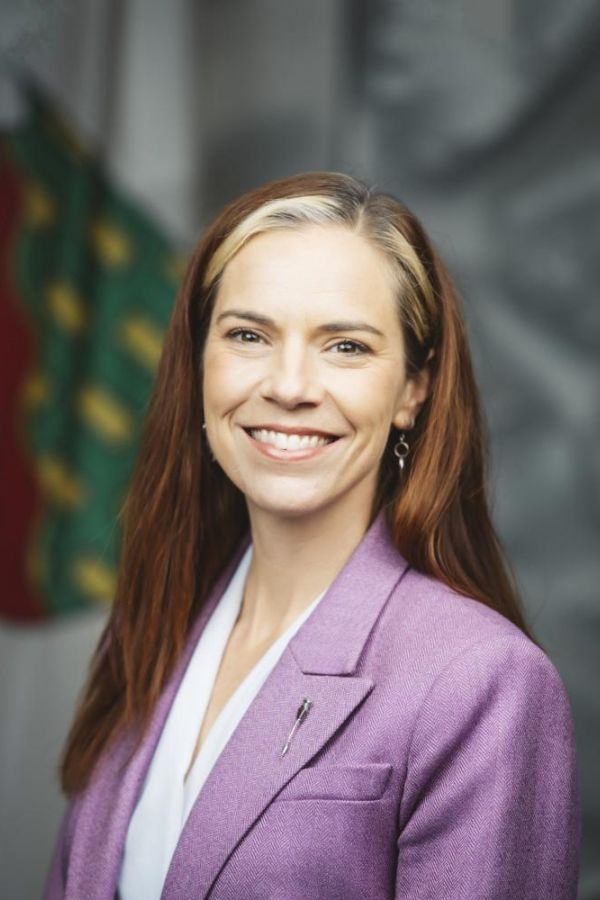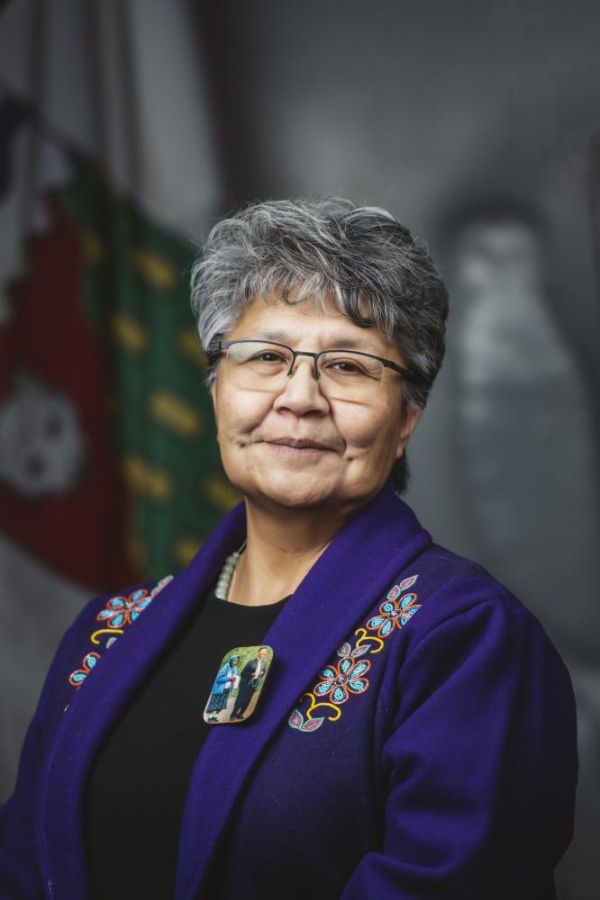Debates of March 9, 2023 (day 149)
Bill 74: Forest Act, Carried

Thank you, Mr. Speaker. Mr. Speaker, I move, seconded by the honourable Member from YK South, that Bill 74, Forest Act, be read for the second time.
I wish to advise the House that Bill 74, Forest Act, has been drafted under the Intergovernmental Council Legislative Development Protocol which sets out a collaborative process of development of legislation with respect to lands and resources between Intergovernmental Council, Indigenous governments, and the lands and resource department of the Government of the Northwest Territories.
This bill repeals the Forest Management Act and the Forest Protection Act and replaces them with one comprehensive statute that
Allocates responsibility for the stewardship and management of the forests in the Northwest Territories among renewable resource boards, renewable resource councils, forest management committees, and the Government of the Northwest Territories;
Provides for the establishment of a dispute resolution process to be utilized where there is disagreement among the previously mentioned entities respecting the design or development of plans for management of forests and forest resources;
Establishes forest management and protection standards including wildfire prevention and control measures;
Establishes a licensing and permitting scheme with respect to the harvesting and use of forest resources;
Establishes appeals processes for persons affected by decisions made under this Act;
Establishes prohibitions, offences and penalties and sets out an investigation and enforcement regime; and
Authorizes the Minister to make regulations.
Thank you, Mr. Speaker.
Thank you, Minister. The motion is in order. To the principle of the bill. Member for Frame Lake.

Merci, Monsieur le President. I will speak to what this bill is all about and the process that resulted in the bill. I will also provide some comments on the bill and concerns with what is there and what is missing. There will be some praise but also harsh words that reflect my continuing concerns around the failure of Cabinet to implement its Open Government policy.
To be honest, I simply edited the remarks I made almost four years ago to almost the same day on Bill 44 from the 19th Assembly. Some of those concerns are addressed in the new bill, I'm happy to say, but others have been completely ignored.
This is a muchneeded bill to modernize our forestry practices and management, including fire control. The GNWT has a Forest Management Act and four sets of regulations under it. This legislation allows for the establishment of a supervisor and officers. The powers of the Minister are also set out. Agreements can be entered into and permits and licenses issued for forestry activities. An appeal process is set up. An enforcement regime is established, including offences. Penalties are set out along with regulationmaking authority. There are regulations that set out more detail for permits and licenses for harvesting, commercial operations, and research. Charges and fees are laid out, including those related to reforestation. Recordkeeping is also required.
The other three regulations create a forest management unit near Cameron Hills for the cutting of timber, zones for management purposes, and other areas for management.
There is also a Forest Protection Act with no regulations under it. It deals largely with fire suppression, duties to report, and duties to assist. Offences and penalties are also established with ministerial power to create regulations.
The old Bill 44, Forest Act, was introduced in the last Assembly but was eventually withdrawn due to complaints and concerns expressed by Indigenous governments, the public, and standing committee. There was no opportunity for Indigenous governments to review the final draft of the bill. It was very poorly constructed, Mr. Speaker. It would have taken a lot of work to properly reorganize it and to incorporate comanagement and public participation. Thankfully, the then Minister withdrew it.
Virtually all of Bill 44 has been carried over into Bill 74, with substantial reorganization and improvements I will discuss a little later.
So Bill 74, Forest Act, will repeal and replace the two current pieces of forest legislation and their regulations. Modern forestry legislation should establish a planning and management regime and the bill does that while ensuring a collaborative approach with Indigenous governments and integration of comanagement processes and bodies.
Bill 44 sets out overall administrative roles and responsibilities. Sustainable forest management is outlined, followed by a detailed section on forest fires and suppression. Agreements, permits, and licenses are provided for in the bill and there is a detailed appeal process. Officers are created to provide enforcement through inspections, investigations, and seizures with fines and penalties as well. Alternative measures may be agreed upon. Regulationmaking authority is spelled out. Lastly, there are some transitional provisions.
The bill was codrafted under the Intergovernmental Council Legislative Development Protocol of 2020. A technical working group comprised of Indigenous government staff and GNWT staff developed the bill. From every report I have heard, there was satisfaction with this process from those Indigenous governments that participated. The evidence of collaboration is clearly evident in the bill from new sections on collaboration and the integration of comanagement bodies and processes. I look forward to hearing from these and other Indigenous governments during the review of the bill by standing committee.
The Department of Environment and Natural Resources was the lead GNWT agency during this process. I cannot find any evidence of any public engagement by the department during this Assembly until a discussion paper was released on November 21, 2022. A socalled "have your say" webpage was set up on that date with instructions to submit comments by email or you could also apparently post questions. No questions or comments appear to have been posted on that page, Mr. Speaker. The deadline for comments was December 21st, 2022. That was also extended by a week. The phone number shown on the webpage did not work and was subsequently corrected. A public presentation on the discussion paper and process was requested by Alternatives North who broadcast the meeting on December 21st, 2022, and I observed the event. That group made a written submission that I tabled in the House earlier this week.
After three years of codevelopment of the bill, the public was only included at the very end, with five weeks to comment, including some time over the busy holiday season.
A socalled "what we heard" report was released on March 6, 2023 with four substantive pages of text. The preparation of the report took almost twice as long as the time given to the public to submit comments. Apparently, there was only one written submission, Mr. Speaker. I have seen a lot of "what we heard" reports during the Assembly but this is one of the worst one I have seen. Only one submission was received, as I've said, so we can easily compare the report against what was actually said and it appears to me, Mr. Speaker, that the department is deaf.
The report dismisses all of the issues and concerns that were raised. The department claims it will prepare regulations at some future date that will allow for public participation. These same concerns were raised on Bill 44, were dismissed then, and not addressed in Bill 74, so I have little confidence the department will actually follow through in any serious way. I am very curious to know whether this public engagement actually resulted in any changes to the bill.
The department did not share much information with standing committee on the development of the bill. There was request for information on a timeline in November 2022, but no briefing was offered.
I do want to commend Cabinet for a recent decision I am commending Cabinet, Mr. Speaker, for a recent decision to provide a confidential advance copy of bills to Members after Cabinet has approved them and before they are introduced. This provides Members with additional time to review each bill before it receives first reading and becomes public and before remarks can be made on the principle of the bill at second reading. This will prove very helpful for Members who do wish to speak at second reading, and I sincerely thank Cabinet for this innovation. This would have helped me enormously in the last Assembly as I struggled to read a bill and then pull together comments overnight. That being said, it took me about four hours of reading and studying Bills 44 and 74 to understand what changes had been made and I will cover that in the next section, Mr. Speaker.
Here's what I said about Bill 44 in the last Assembly: "There are a number of very serious issues with this bill as I see it. It is almost as if the bill was half done before it was introduced. There is no logical order or flow to it. One might expect to see research and inventory work lead into the development of management plans, which would then form the basis for forest use through agreements, followed by licenses and permits that would authorize specific forestry activities that would be monitored and reported on. Although the bill contains most of these functions, they are scattered about in an almost incomprehensible fashion." That's what I said on the last bill, Mr. Speaker.
I am very pleased to report that these drafting and organizational problems have been fixed in Bill 74. Thanks to the drafters and technical working group for sorting this out very well.
I commend the technical working group and department for their hard work in integrating comanagement into the bill and the various tools it creates. These include forest ecosystem management plans, forest management agreements, and development of terms and conditions for classes of various forest activities such as cutting, clearing, transport, research, mill operation, and more. The bill requires collaboration. This means sharing of information, opportunities for comment on these tools by Indigenous governments and organizations, renewable resource boards, and committees.
Mr. Speaker, one of the most interesting parts of the bill provides for forest management committees to be established, recognized, and incorporated into decisionmaking for Indigenous peoples in areas outside of lands, resources, and selfgovernment agreements. Particularly for the governments that are not part of the Intergovernmental Council, this is a really good thing, Mr. Speaker.
A forest superintendent position is created with extensive powers but very few actual duties. For example, the forest superintendent "may" develop forest ecosystem management plans. These will be the very foundation of the whole system of agreements, permits, and licenses to make sure all forest activities are sustainable. It's not clear whether agreements and harvesting can or will take place without a plan, but I don't believe that's a very good idea. Another example, the forest superintendent "may" monitor the state of our forests and is required to report on that to Indigenous governments and comanagement bodies but not the public.
My greatest concern with the bill is that there is virtually no role for the public in any of the decisionmaking and sharing of information. That's not for the Intergovernmental Council to sort out but the GNWT's responsibility, and it has failed dismally. The only mention of the public is as a recipient of notices for fire bans and the restricted areas due to fires. There is no role for the public in developing forest ecosystem management plans, reviewing forest management agreements, permits or licenses, receiving notices of forest threats and actions. Mr. Speaker, community governments do not have to be notified of forest threats and actions either.
There is also a lot of authority and power invested in the forest superintendent and officers to issue notices, directions, prepare plans and so on, but nowhere does it state that any of these documents are public or where they may be found. I raised the same issues earlier in this sitting under the current forest management legislation and got vague and incomplete answers. The logical place for all of this information to be located would be an online public registry accessible to all. This is how the comanagement bodies work and how the public has come to expect where information can be found.
Provisions for a public registry were added into the Protected Areas Act, the Public Land Act, and the Mineral Resources Act in the last Assembly, and that is desperately needed in this Bill. How is anyone supposed to know what is going on without a public registry? I simply don't understand the resistance of the department to create a public registry. Yes, there is a cost to doing this, but this government continues to receive funding from the federal government to responsibly manage resources. If we want responsible resource development, accountability, transparency, and public participation, a public registry is part of doing business right.
There are problems with the appeal process laid out in the bill in that the only parties that seem to be able to initiate a dispute are an applicant that is denied or issued something they disagree with. Indigenous governments and comanagement bodies can also file appeals. Although the issue of surface rights holders and their interests were raised, the bill does not address this issue. I am going to try to explain this a little bit more clearly, Mr. Speaker.
If there was a lodge or a recreational leaseholder, or even a rightsbased cabin in an area, a timber cutting license could be issued covering those locations. Those individuals would not have any right of appeal. If a mining claim were staked over those properties and there was a dispute over exploration activities, there is a process for resolving those issues. For forest activities, there is no provision to resolve any such dispute.
The bill deals with fire suppression, and there is a mandatory requirement for prevention and preparedness plans for industrial activities. This is a good feature but there is no provision for any kind of review or public participation, even by a community government that may be nearby or called upon for assistance. The supervisor can provide reimbursement for those called upon to assist but there does not appear to be any dispute resolution process if the amount offered is not accepted.
Fees or charges in respect of reforestation or land clearing are to be tracked as a special purpose fund and are to be used only for forest renewal activities. This is good, in principle. However, there is no requirement for any monitoring or evaluation of the effectiveness of such efforts and no public reporting either. This does not create any accountability or transparency.
Again, as we have seen with many of the resource management bills from Cabinet, there is a troubling pattern of extensive and sweeping ministerial power and discretion without many checks or balances. However, in this bill a better balance is achieved with some checks and balances through required collaboration with Indigenous governments and comanagement bodies. That being said, there are 58 listed areas for potential regulations that take up three pages in this 67-page bill.
Lastly, there are few links or coordination specified with other resource management functions such as land use planning. Presumably, if there is an approved land use plan in place, any forest management agreement, permit, or license should conform to that plan and nonconforming applications should be automatically rejected. The bill is silent on this but needs to spell that out more clearly. And they should conform, Mr. Speaker.
I look forward to working with my colleagues on the Standing Committee on Economic Development and Environment to hear what Indigenous governments, nongovernmental organizations, industry, and the public have to say about improving this very important piece of legislation. Mahsi, Mr. Speaker.
Thank you, Member for Frame Lake. The motion is in order. To the principle of the bill.
Question.
Question has been called. All those in favour? All those opposed? Any abstentions? The motion is carried. Bill 74 has had second reading.
Carried
Member for Nunakput.

Thank you, Mr. Speaker. As set out in Tabled Document 88519(2), the process convention on the introduction, consideration, and enactment of bills drafted pursuant to the Intergovernmental Council Legislative Development Protocol, I seek unanimous consent to waive Rule 8.3(1) to increase the standing committee's review period from 120 to 180 days with the intention that the committee will report back Bill 74 during the final sitting of the 19th Legislative Assembly. Thank you, Mr. Speaker.
Thank you, Member for Nunakput. The Member for Nunakput is seeking unanimous consent to waive Rule 8.3(1) and increase the standing committee's review period from 120 to 180 days. Are there any nays? Hearing none, the time for the committee's review of Bill 74 has been increased from 120 to 180 days.
Second reading of bills. Minister responsible for the Status of Women.














